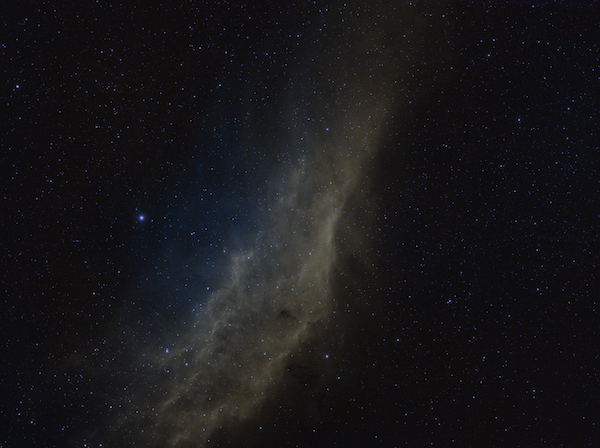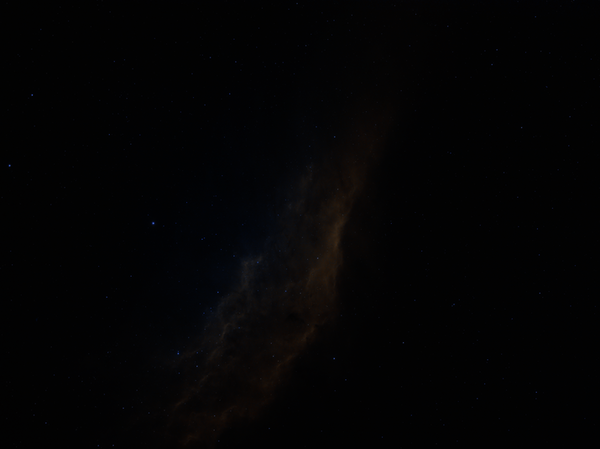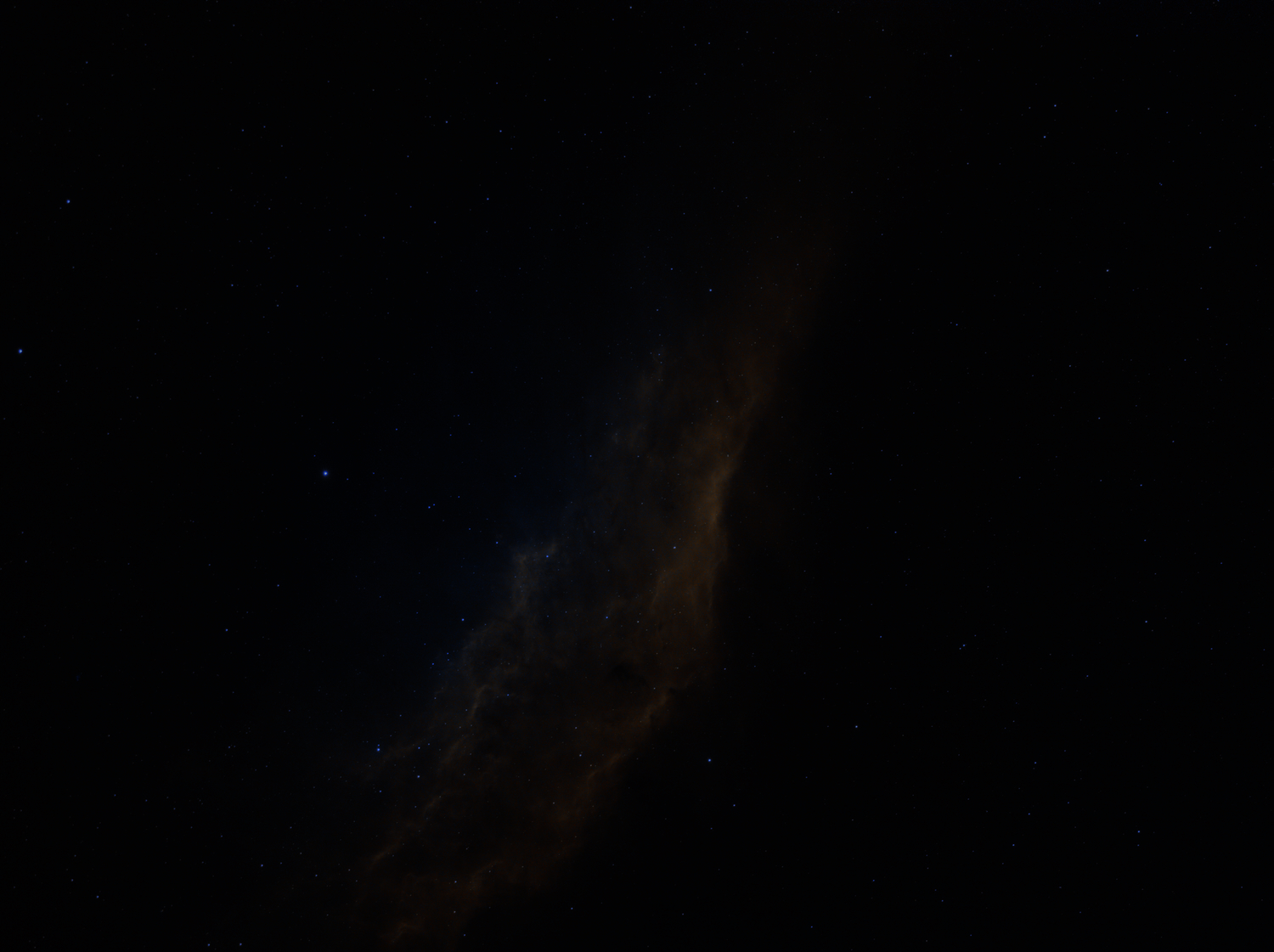California Nebulae
The California Nebula, officially cataloged as NGC 1499, is a striking emission nebula located in the constellation Perseus. Its name comes from its resemblance to the outline of the state of California. This celestial feature glows predominantly in red hues due to the ionization of hydrogen gas, a process driven by the ultraviolet radiation of nearby stars. Spanning about 100 light-years in length, the nebula is a vast and sprawling cloud of gas and dust that is actively interacting with its stellar environment.
Here you can see different ways of processing the same data, available for download in their full size at the bottom of this page.


You can also download the full size high resolution image. Download (46 MB)
I took a stab of reprocessing the data, decreasing the intensity of the stars and bringing more colour to the H⍺ channel. Download v2 (98 MB)
Situated approximately 1,000 light-years away from Earth, the California Nebula is relatively close in astronomical terms. Its prominent red glow is primarily caused by a hot, young star known as Xi Persei, a massive and luminous star that emits the intense radiation necessary to energize the nebula’s gas. The interplay between this radiation and the surrounding gas creates the bright, glowing structure that we see through telescopes. The nebula’s location in Perseus makes it a favorite target for astrophotographers, particularly in the northern hemisphere, where it is well-positioned for observation during fall and winter. The nebula’s beauty and scientific importance underscore its status as one of the most fascinating objects in our galactic neighborhood.
